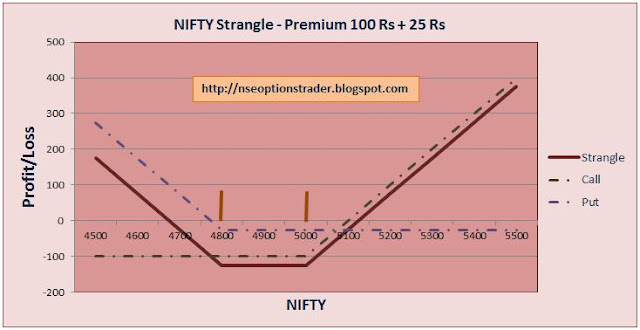Hello everyone, welcome back. Hope you all had a great time during Diwali. I was back in Pune yesterday night and was waiting eagerly to get back to writing ways. Surprisingly, even during the vacation... thought of writing couple of times. Hope that's a good sign.
Anyways, have to keep Support and Resistance post on a hold for the time being. Reason is, along with Support and Resistance level, we will also discuss trading strategies depending on them. These strategies will necessarily involve selling options at times for which it is imperative that we understand how margins work for Options. Hope all of you have gone through the Margin Post on Futures Blog as we will use that as baseline here.
As we have seen in Futures Blog, margin consists of two parts - SPAN and MTM. However, in case of Options, it is different due to the inherent difference between Futures and Options. While both parties are bonded by Futures contract and have obligation to settle it; in Options only seller has the obligation. Buyer of Option has the right but not the obligation to fulfill his side of the bargain. So obviously no cracker or Diwali sweet for you to guess that a buyer of the Option does not have to pay any margin. He pays the premium upfront and that is as much deep as he can sink in it.
However, a seller (Option writer) receives the Premium for writing the Option. This premium is added to margin requirement and just like in case of Futures; it is calculated daily. If you recall the Option Pricing posts (this and this), Premium already covers the Intrinsic Value of underlying or in other words Mark to Market component. Not to forget, it also covers the volatility component within the Premium. This means premium of the Option theoretically covers SPAN as well as MTM part of contract. So if premium goes north/south, your margin requirement changes accordingly which you have to oblige. There is no MTM or SPAN as it is not needed and you have to make sure that the you keep the margin equal to or more than the current premium of the contract in the market. Another no brainer is that Margin does not go to ridiculously low levels even if Premium approaches zero as there is a minimum margin (Short Option Minimum Charge) that you have to keep with the exchange at all the times.
Will write more on Margin on Futures Blog in a while. Don't forget to read and comment. Also do let me know if you have any questions.
Welcome back once again... let's ride.




